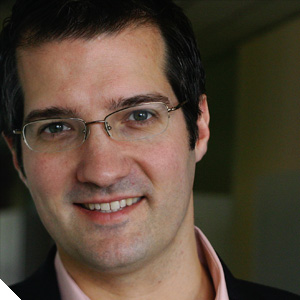Lisbon, Portugal
Prior to venturing out on his own, Stephen spent more than a decade building and leading teams of information architects, interaction designers and UI developers. He's designed Web applications for businesses such as Nokia, Frito-Lay, Sabre Travel Network, and Chesapeake Energy as well as a number of smaller technology startups. Stephen likes to believe that someday he'll have the time to start blogging again at poetpainter.com

Design
A while back, LinkedIn experimented with a feature: a little meter above the users' information, showing their profile's "percentage completed." Suddenly, more users filled out their profiles. The feature didn't have a clever interface, a sophisticated information architecture, or show any technical prowess. It just leveraged basic human psychology.
As designers, we work hard to provide powerful features in our applications, but if users don't take advantage, it's all waste. We have to extend our designer's toolkit, leveraging the latest thinking from behavioral economics, neuroscience, game mechanics, and rhetoric.
In this fun-filled, interactive workshop, Stephen P. Anderson will guide you through specific examples of sites who've designed serendipity, arousal, rewards, and other seductive elements into their applications, especially during the post-signup period, when it's so easy to lose people. He'll demonstrate how to engage your users through a process of playful discovery, which is vital whether you make consumer applications or design for the corporate environment.
Using the Mental Notes card deck, participants will start with an application that is perfectly "usable," and take it to the next level by exploring how things like feedback loops curiosity and social proof could make a site more seductive.
Who is this workshop for?Designers, developers, marketers and product managers-- anyone involved with the design of website and applications. The focus of this workshop is on how to design for behaviors, which is one thing diverse product teams can align around!
What will you learn?By the end of this workshop you will:
You'll flex your critical thinking muscle through a series of jump starter activities. Even better, attendees may be encouraged to participate, if not embarrass themselves in front of a room full of their peers as they challenge themselves to see past the first, obvious—and often incorrect—answers, and start to flip problems on their heads to see solutions from a different view.